6 Awesome Examples of Leveraging Corporate History in Brand Storytelling
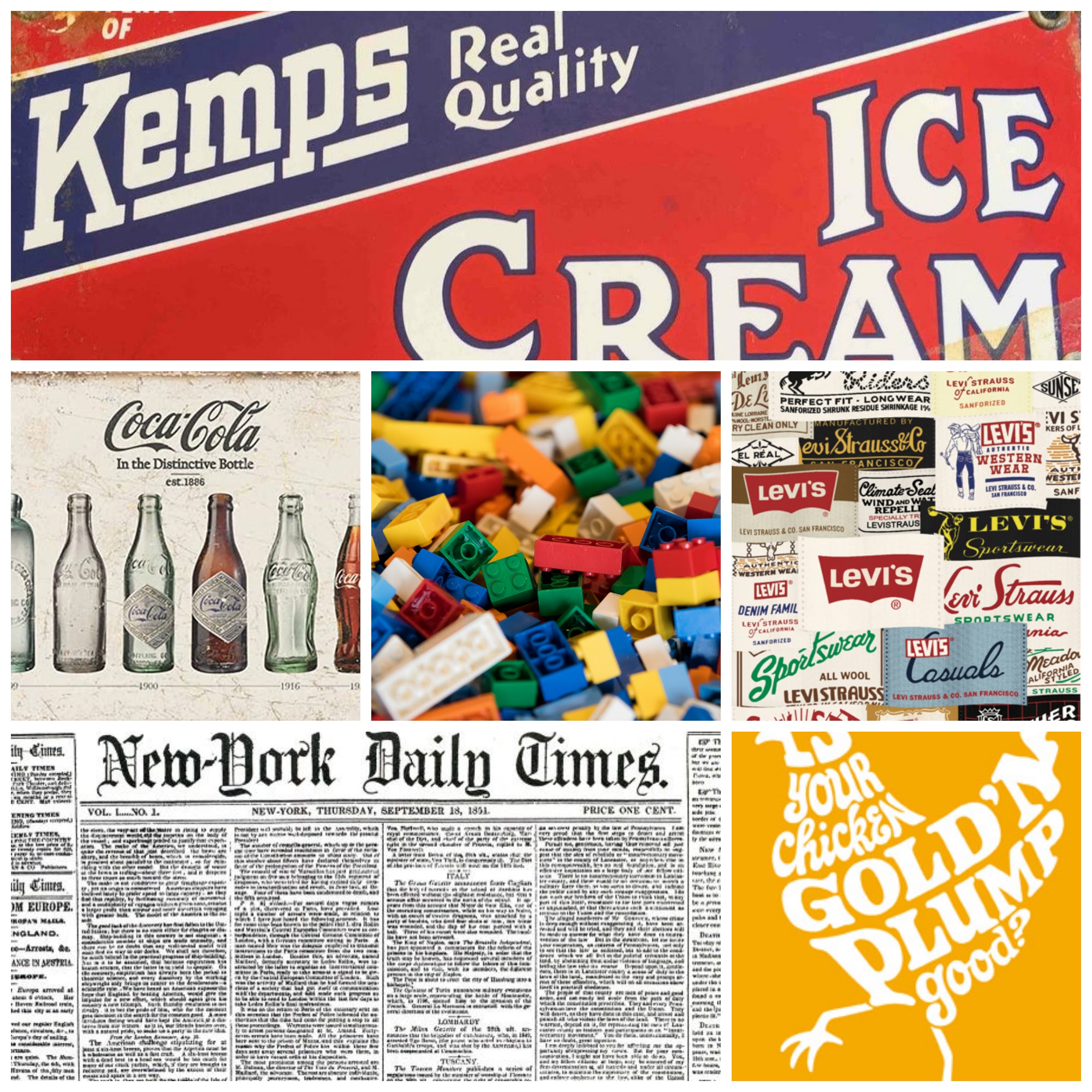
You’re scrolling through Facebook and your past posts – with images recalling a five-year-old inside joke, best friend’s wedding, or favorite family vacation at the lake – spark memories that come flooding back like it was yesterday. Those feelings of nostalgia and a shared past bring our history to life, which allow us to collectively reminisce on social media about the way things were (or the way we’d like to remember them!)
Your brand can share storytelling moments from its company history with your key stakeholders, too. Corporate histories are important to customers, employees, business partners, and community members. Your corporate story can prove that sound business decisions have been made along the way, pay respect to your employees, build goodwill, and demonstrate long-lasting corporate strength.
But, it takes strategic insight and smart planning to communicate a brand’s history well. From legacy videos and anniversary books to corporate birthday events and digital archives, what follows are five ways smart brands have leveraged their company histories in brand storytelling.
1. Legos’ Corporate History Video
Although 17-minutes-long, the Lego brand video is a shining example of how engaging the medium of video can be in communicating a corporate history story that’s true to its brand.
Produced by Danish agency Lani Pixels, the animated film was lauded by Contently for surpassing more than one million views in less than a week. “By telling the story of how Lego came to be, consumers are getting a behind the scenes look, and, simultaneously, learning about the people who built it. When customers get this rare glimpse, they tend to feel more connected to the company.”
Plus, as Contently goes on to say, “a good story will make a brand seem unique among similar fierce competition.” The video, narrated by the grandson of Lego founder Ole Kirk Christiansen, was created to celebrate the 80th anniversary of the Lego brand.
2. The New York Times Digital Archives
The digital age has allowed companies to tell their histories in new ways (and not just in online videos). The New York Times TimesMachine is a best-in-class example of how a brand can digitize its archives to engage its audiences. As a newer service offering, TimesMachine provides The New York Times subscribers with a fully searchable archive of past newspapers, such as the July 20, 1969, article, “The Day Before The Moon Landing.” The archive indexes papers from 1980 back to the paper’s founding in 1851.
On the launch of TimesMachine, Fast Company writer Nick Rappolt in “Why Brands Should Mine Their Archives” says: “Instead of leaving back issues to grow dust, the paper unlocked the value of its old content with TimesMachine, which resurfaces historic interviews and features to give context to current news stories, boost reader dwell time and cultivate a strong brand story as a long-established ‘newspaper of record.'”
Even if your company doesn’t have nearly 165 years’ worth of content under its belt, there’s still more than you might think to curate and share electronically. For example, the UK supermarket chain Sainbury’s posted stories, old pamphlets, vintage photos and photos of cool, old grocery items in its dynamic, “living archive” collection.
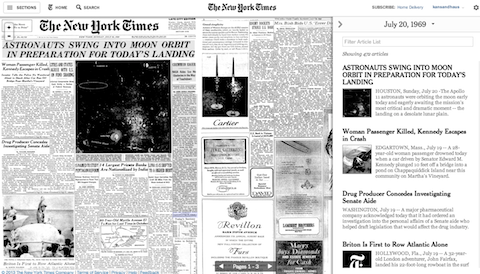
3. Levi Strauss’ Online Content
Another great example of digitized history comes from the 162-year-old Levi Strauss brand. Levi Strauss transforms its archived content through robust online channels, which include:
- A dedicated “Our Story” section on its website complete with historic photos, a heritage timeline, and resources for educators on the invention of blue jeans, and
- The “Unzipped” brand publishing platform that offers “a deeper look inside Levi Strauss” through Throwback Thursday vintage photos and blog posts on its culture and social progress.
Says Levi Strauss’ historian Lynn Downey in its “Our Story” video, “Not a place where old stuff goes to die, [our] archives is a living breathing part of the company and a very, very important contributor to the business.” For more on Levi Strauss’ use of brand history storytelling, check out the recent Entrepreneur article, “How Levi’s Became a Brand With Staying Power.”
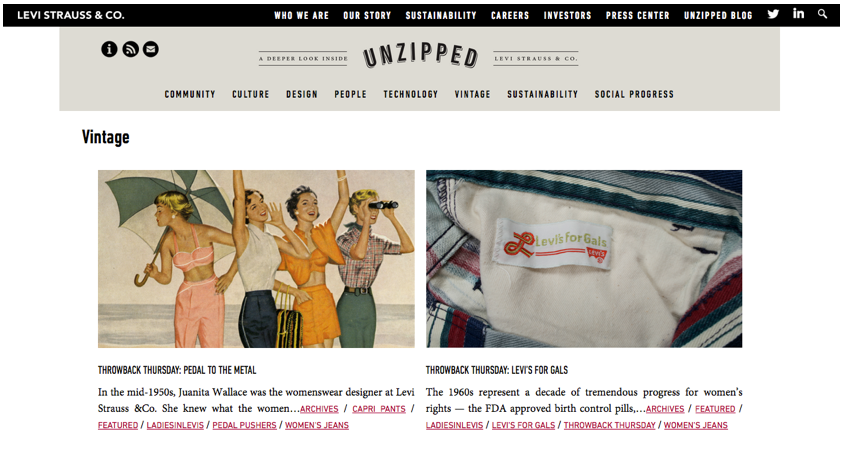
4. Branded History Museums
Brands of all kinds, whether B2B or B2C, have made the ultimate investment in telling their corporate stories by erecting museums, temples paying tribute to their past. Examples include:
- The World of Coca-Cola in Atlanta, Georgia, puts on display the soft drink brand’s old advertisements and bottle memorabilia, as well as a vault containing the secret formula.
- Wells Fargo‘s 11 museums across the U.S house historic artifacts, including real stagecoaches, gold nuggets reminiscent of the Gold Rush, and old-timey telegraphs.
- Hormel’s SPAM brand has a dedicated museum near the company’s processing plant in Austin, Minnesota (aptly dubbed SPAM Town USA). In fact, the now 12-year-old museum of the 78-year-old brand is undergoing renovations for a new, decidedly less canned museum experience. Stay tuned in 2016!
- Ben & Jerry’s factory in Burlington, Vermont, features a flavor graveyard of its past ice cream flavors such as Vermonty Python and One Sweet Whirled.
5. Kemps’ Experiential Anniversary
If your brand isn’t ready for a permanent installation – or even a partial display of heritage in your lobby – why not takes your corporate history on tour? Just one year ago, our firm helped client Kemps Dairy celebrate its 100th anniversary. After a century of producing delicious dairy products, Kemps sought to creatively brings its past into the future.
What ensued was the creation of a 53-foot-long Mobile Mooseum. The semi-trailer truck paid homage to Kemps’ frozen dessert products, dairy history and heritage. It contained an 8-foot-long electronic mooing cow sculpture and even an actor playing a “soda jerk” operating a vintage 1940s ice cream soda fountain, followed by a Guinness Book of World Records-breaking event (Read more about the World’s Largest Scoop of Ice Cream in “4 Marketing Secrets for Viral GUINNESS WORLD RECORDS”). In sum, Kemps’ anniversary was a great example of how to give a brand’s corporate history a whole new life.
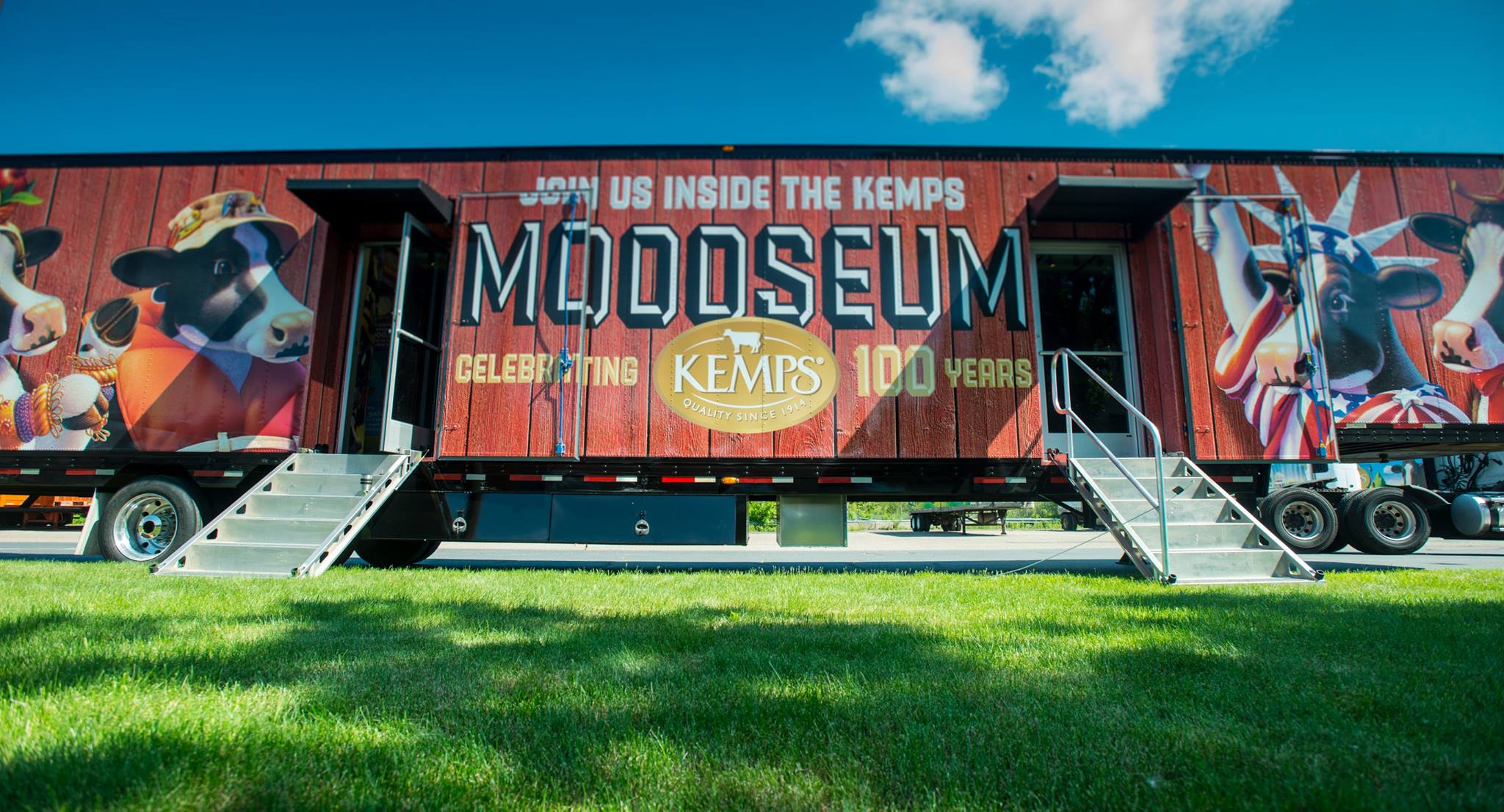
6. GNP Company’s Souvenir Booklet
For our PR agency’s client, GNP Company, Minnesota-based producers of the nationally-known brands of Just BARE® and Gold’n Plump® chicken, we helped chronicle the company’s family-owned history of nearly 90 years following the retirement announcement from third-generation CEO Mike Helgeson. Tasked with chronicling the GNP Company history and Helgeson family legacy, we dove deeply into the company’s archives, along with memorabilia from Helgeson family members and local historical societies. We went on to interview Helgeson, his son, his father, a half dozen retired employees and current leadership.
From start to finish, the history project was completed in 12 weeks, just in time for team member meetings and retirement events in Minnesota and Wisconsin. The souvenir booklet – a 40-page document with a “Which Came First?” chicken and egg theme, French fold pages and pullout chronological timeline – was printed on 100 percent post-consumer waste fiber with vegetable-based inks, which was important given the company’s focus on social responsibility.
The booklet was gifted to more than 2,000 GNP Company team members and family farm partners, as well as dozens of community members and business partners.
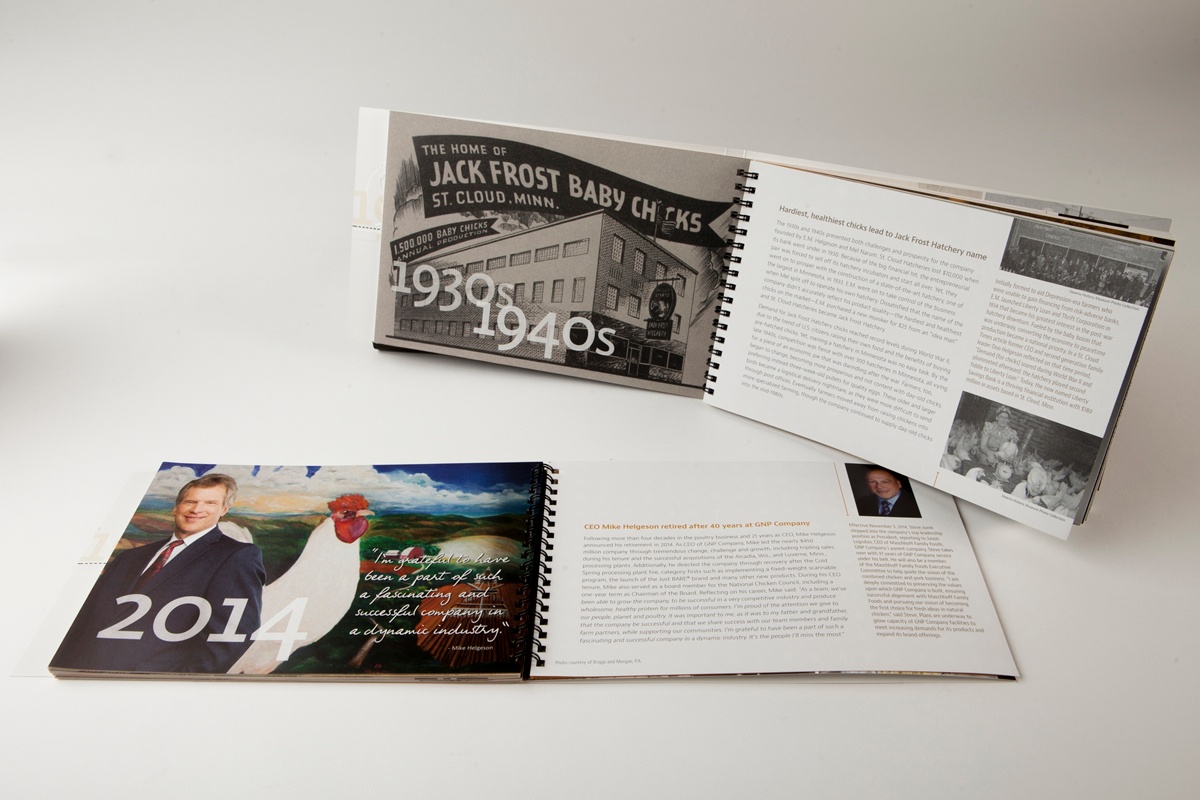
Throughout the process of gathering old stories and files, many employees past and present remarked that the history project was long overdue. Employees and communities want to hear about the history of local companies, but companies don’t often devote the time, money or bandwidth to kick start the preservation of their legacy.
How To Tell Your Corporate History
So, where can PR and marketing staff get started in telling their brand’s story? Here are Maccabee’s lessons for undertaking such a project:
- Gain the buy-in of senior leadership. Develop a strategic plan that goes beyond the feel-good benefits of the project and points to the positive bottom-line effects your project can have.
- Know your end goals and an idea of your output. It will help to stay focused when the project inevitably growers larger than you expect.
- Set a deadline. Without a due date, a brand history project may never get done.
- Being collecting memorabilia – Now! Even if you don’t plan to take on the project for years, beginning to capture images and files in one central place can help save time when you do get started.
- Curate, curate, curate. You don’t know what you’ve got until you go looking for it. Developing an archival program can be a daunting task, especially when company archives seems so closely related to the boring task of storing old files.
- Leverage relationships. Speak to your community resources, such as historical societies, libraries and newspapers. Trade media and industry trade groups can also be of great help.
- Get the work done and find other uses. In the case of GNP Company, the historical content was compiled for the souvenir booklet, but was then available to be repurposed for future initiatives, such as employee orientations and in-office signage.
In a marketing world trapped by so much corporate sameness, capitalizing on your brand’s long and storied history can make a big difference. Play on your employees’ and customers’ feelings of nostalgia. Dare to reveal your corporation’s personality and resiliency over the years. Showing your key audiences that you’re unique and relatable will help you meet achievable business goals, and the chance to celebrate your brand’s second 100 year anniversary!
Image Sources: Maccabee PR, The New York Times, Unzipped

